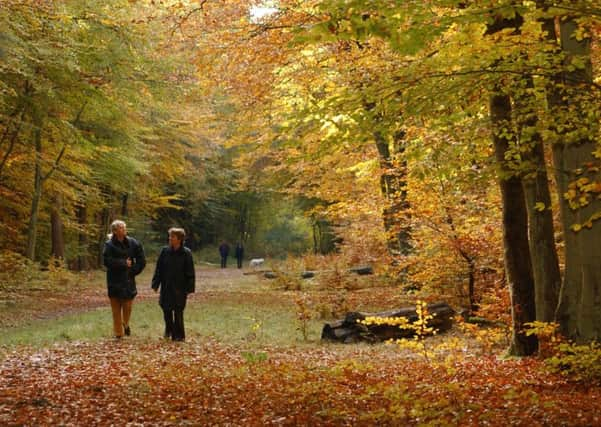Trees grow slowly but changes in forestry are coming quickly


In 1900, only 5 per cent of Scotland was covered in forest, but by 2007 this had increased to 17per cent . With the Scottish Government setting a target of 10,000 hectares of new woodlands per year, by the second half of the 21st century, woodlands will have expanded to around 25 per cent of Scotland’s land area. And with this continuing growth in the sector, the shape of forestry is changing.
The Scottish Government is currently consulting on the administrative and legal profile of forestry in Scotland. This is a process of fully devolving forestry governance to Scotland, but Forestry Commission Scotland (FCS) will also be no more. Its functions are proposed to be separated into a body which looks after the physical assets of Scotland’s publicly owned forested land and farms and a division of Government which carries out the regulatory, policy-making, grant-managing and advice functions.
Advertisement
Hide AdAdvertisement
Hide AdHow well these future functions work matters to the whole forestry sector in Scotland; an industry that is worth just shy of £1 billion to the economy, supports 25,000 jobs and amounts to a great deal more than publicly owned woods. We need to ensure expertise built up in FCS is retained and that the new arrangements streamline processes and certainly don’t hinder the industry.
The forest industry has been working to ensure Scotland’s future forestry is an asset not just in financial terms but in terms of our natural environment too.
The trouble with trees, however, is that they grow slowly and what many people still see is plantation forestry that was planted 30, 40, 50 years ago at a time before these considerations were designed into commercial planting schemes. As a result it sometimes appears to the lay person that little is changing in terms of forestry design when in fact this is one of the most progressive land-based businesses Scotland has.
The outcome of the EU referendum also represents change that is as yet unquantified. It certainly throws up challenges for the future of rural policy and funding support, for trade, labour markets and the regulatory framework. But it also provides the opportunity to do some high level thinking about all of things we want Scotland’s countryside to deliver, both market goods and the public goods mentioned above.
There is possibly also space at the moment for all land-based businesses to start thinking about the natural capital agenda and what it might mean for them. Forestry was one of the first sectors to think about the valuing ecosystem services in the form of carbon storage and the woodland carbon code.
Land-based businesses should perhaps lead the call for natural capital accounting, since if such an approach was adopted by businesses more widely it could enable primary production to occur on a truly sustainable basis without the need for the public purse to intervene to any great extent at all.
If we get this thinking right, it should enable landowners and managers, farmers and foresters to make rational land management choices based on achieving the best outcomes. As Scotland’s trees continue to grow, so will our thinking on how to meet the future challenges in rural and environmental policy.
Anne Gray, Senior Policy Officer (Land Use & Environment) at Scottish Land & Estates